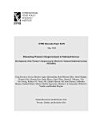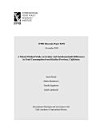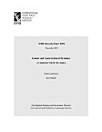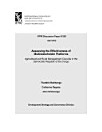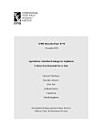Nutrition-sensitive agriculture diversification and dietary diversity: Panel data evidence from Tajikistan
Takeshima, Hiroyuki · Lambrecht, Isabel · Akramov, Kamiljon · Ergasheva, Tanzila
huhti 2024 · IFPRI Discussion Papers Kirja 2249 · Intl Food Policy Res Inst
E-kirja
48
sivuja
family_home
Kelvollinen
info
reportArvioita ja arvosteluja ei ole vahvistettu Lue lisää
Tietoa tästä e-kirjasta
Nutrition-sensitive agricultural diversification continues to receive interest among developing country stakeholders as a viable option for achieving dual goals of poverty reduction and food/nutrition security improvements. Assessing the effectiveness of this strategy is also essential in countries like Tajikistan. We attempt to enrich the evidence base in this regard. We assess the linkages between household-level agricultural diversification and dietary diversity (both household- and individual-levels) using unique panel samples of households and individual women of reproductive ages in the Khatlon province. Using difference-in-difference propensity-score methods and panel fixed-effects instrumental variable regressions, we show that higher agricultural diversification together with greater overall production per worker and land at the household level leads to higher dietary diversity, particularly in areas with poor food market access. Typology analyses and crop-specific analyses suggest that vegetables, fruits, legumes/nuts/seeds, dairy products and eggs are particularly important commodities for which a farmer’s own production contributes to dietary diversity improvement. Furthermore, decomposition exercises within the subsistence farming framework suggest that nutritional returns and costs of agricultural diversification vary across households, and expected nutritional returns may be partly driving the adoption of agricultural diversification. In other words, households’ decisions to diversify agriculture may be partly driven by potential nutritional benefits associated with enhanced direct on-farm access to diverse food items rather than farm income growth alone. Our findings underscore the importance of supporting household farm diversification in Tajikistan to support improved nutrition intake, especially among those living in remote areas. In a low-income setting with limited local employment opportunities that is vulnerable to a wide range of external shocks, this will likely continue to be one of the most straightforward and realistic paths to improving household’s nutrition resilience.
Arvioi tämä e-kirja
Kerro meille mielipiteesi.
Tietoa lukemisesta
Älypuhelimet ja tabletit
Asenna Google Play Kirjat ‑sovellus Androidille tai iPadille/iPhonelle. Se synkronoituu automaattisesti tilisi kanssa, jolloin voit lukea online- tai offline-tilassa missä tahansa oletkin.
Kannettavat ja pöytätietokoneet
Voit kuunnella Google Playsta ostettuja äänikirjoja tietokoneesi selaimella.
Lukulaitteet ja muut laitteet
Jos haluat lukea kirjoja sähköisellä lukulaitteella, esim. Kobo-lukulaitteella, sinun täytyy ladata tiedosto ja siirtää se laitteellesi. Siirrä tiedostoja tuettuihin lukulaitteisiin seuraamalla ohjekeskuksen ohjeita.




